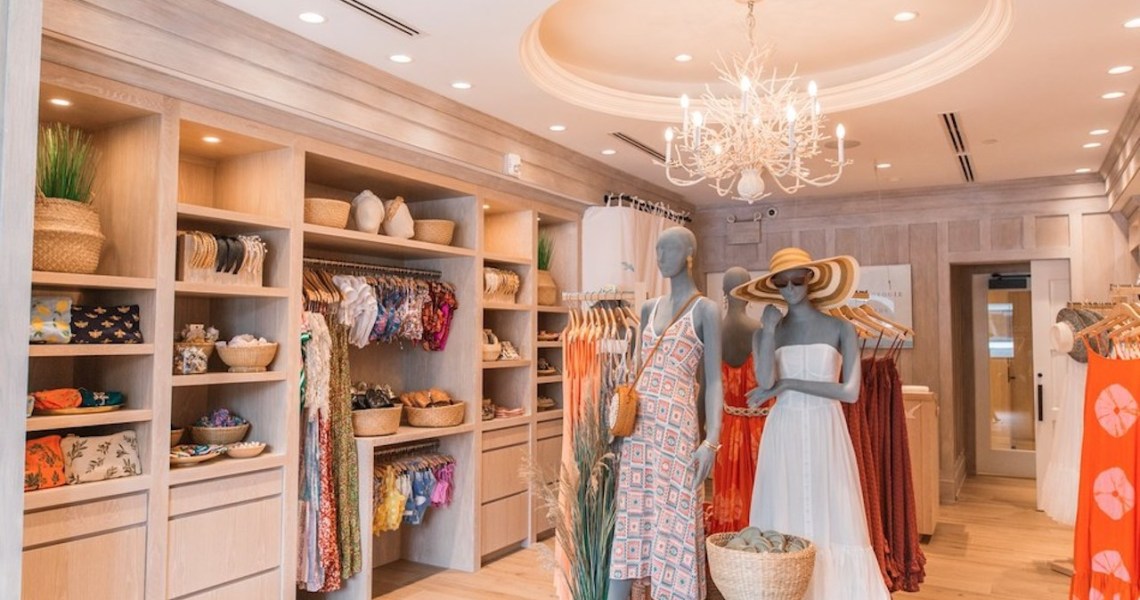At the Glossy Future of Fashion & Luxury Summit held in Naples, Florida last week, executives from across the fashion and beauty industries gathered together to discuss topics including marketing to Gen Z, navigating challenging retail landscapes and growing a brand without taking VC money.
On Thursday morning, executives from Aldo Group, Scanlan Theodore and Anthropologie formed a working group to talk about wholesale, direct-to-consumer, and the pitfalls and strategies of selling through each channel.
Several attendees spoke about the challenge of driving social commerce through platforms like Instagram Shop. Launched in 2020, Instagram Shop is used by a few major brands like Anthropologie and Ray-Ban, but it’s mostly the domain of smaller brands. One attendee said they’ve experienced frequent problems with the tool. For example, customers often forget to update their address when purchasing something, which leads to products getting shipped to the wrong location. Solving the problem inevitably proves a drain on the brand, especially brands with resource-intensive luxury packaging.
Melinda Robertson, American CEO of the Australian brand Scanlan Theodore, said her brand is still trying to figure out whether Instagram Shop should be a revenue driver or a brand awareness play.
“Is it for shopping or for branding?” she said. “It’s tough for us because we sell in both the Northern and Southern hemispheres — at the same time, we’re selling winter clothes in Australia and summer clothes in the U.S. and Europe. We’re moving away from Instagram Shop because we can’t figure out the best way to make use of it.”
But other brand execs in attendance said that social commerce remains appealing because social media platforms — namely, Instagram and TikTok — provide the best access to younger customers.
“There are marketplaces like Showfields or Neighborhood Goods that target millennials and are experiential, but there’s not really something similar for Gen Z,” one attendee said. “That’s something we’re looking for now. What will be the next generation of something like Neighborhood Goods but targeted toward Gen Z in a similar way?”
Ad position: web_incontent_pos1
On the wholesale side, some brand execs said they feel spooked by some of the problems the retail industry has recently faced.
“We were approached by JCPenney, but I turned it down,” one brand exec said. “So many of the big guys have gone into bankruptcy in the last few years, I was worried we’d sign this big order and then have tons of product out there with no way to get paid for it if the partner went under. It’s frustrating that that’s an issue.”
Another attendee had a potential mitigating solution: She said her brand asks for 30% of the total order price from the wholesaler before the product goes into production. That way, if for whatever reason the order falls through and the brand is stuck with the inventory, it’s already recouped at least part of the expense.
On the DTC side, attendees unanimously agreed that driving traffic to a brand’s website is one of the most challenging parts of selling direct. While several attendees said markdowns and promotions are not ideal, one executive said there’s an exception to the rule: a deals segment on a daytime TV show like “Good Morning America.”
“We got on the deals and steals segment of ‘Good Morning America,’” she said. “It was a 30-second spot, and it drove over $160,000 in sales. Yes, it was a 50% discount, but it was worth it because it brought a lot of new people into the brand, and many of them have since become repeat customers.”
Ad position: web_incontent_pos2
Finally, one attendee succinctly summarized the overall discussion’s key takeaways: “Ultimately, wholesale and DTC require aggressively different skillsets and have different values,” she said. “Wholesale is for validity and reach and requires building good relationships with retailers, while DTC is for getting first-party data and requires a lot of marketing knowledge. Really, you should just focus on what your strengths are. A couple of years ago, everyone was selling on Amazon but only a few were doing it well. There’s no point in doing something that you’re not able to do well just because every other brand is.”




